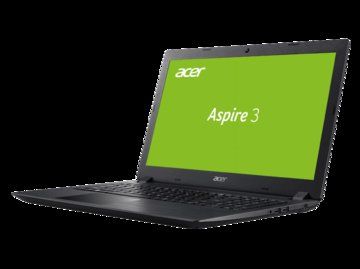
Acer Aspire 3 im Test: 13 Reviews und 10 Bewertungen — Durchschnitt: 3.3/5
Date: (Letzter Test gespeichert: ) - Review: CommentChoisir.fr
Hier sind alle 13 tests und Bewertungen zu Notebooks Acer Aspire 3 mit den 10 Bewertungen und Kommentaren der Tester in ihrem Test.
Acer Aspire 3 test : Acer Aspire 3 scheint in der Kategorie Notebooks gut zu sein, daher sind die Gesamtbewertungen für dieses Produkt positiv.
Wertungen von Acer Aspire 3
Source: https://www.commentChoisir.fr
| 4/5 Tech Advisor | 79/100 NotebookCheck | 3/5 LaptopMedia | 3/5 PCMag |
| 6/10 RTings | 3/5 Nerd Mobile | 2/5 Chip.de |
Pro und Contra für Acer Aspire 3 Liste der Rezensionen und Bewertungen
Zum besseren Vergleich haben wir nach den Vor- und Nachteilen von Acer Aspire 3 und den Bewertungen spezialisierter Websites gesucht.
Keine "Pro und Contra" in diesem Tester gefunden.
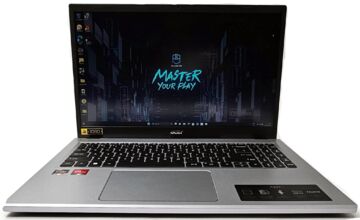

gutes Preis-/Leistungsverhältnis
leiser Betrieb
SSD und HDD
Übermäßiges Nachgeben der Tastatur
Zen 2-Kerne können nicht mit der Konkurrenz mithalten
Kein Fingerabdrucksensor/SD-Kartenleser
[77/100] getestet am 05/03/2018 - Test Acer Aspire 3 (i3-6006U, HD520) Laptop [lesen Sie die vollständige Rezension auf NotebookCheck]
[76/100] getestet am 14/05/2023 - Acer Aspire 3 Laptop-Test: Ein erschwingliches Mendocino Angebot mit ausgezeichneter Akkulaufzeit und einem unterdurchschnittlichen Bildschirm [lesen Sie die vollständige Rezension auf NotebookCheck]
Keine "Pro und Contra" in diesem Tester gefunden.
getestet am 01/03/2022 - Test Acer Aspire 3 (A317-53) ? 17-inches of budget computing [lesen Sie die vollständige Rezension auf LaptopMedia]
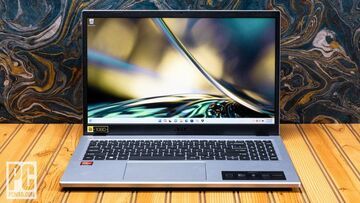

Verlängerte Akkulaufzeit
Aktuelle Wi-Fi-Konnektivität
Konkurrenzfähiger Startpreis
Veraltetes Design, etwas zerbrechlich
Stumpfes Display
Überlegene Konfiguration wird aktualisiert
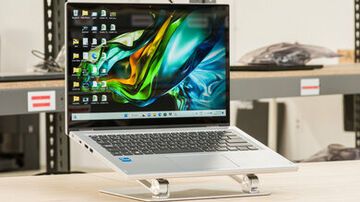

Der Prozessor kann die meisten leichten Produktivitätsaufgaben bewältigen.
Große Auswahl an Anschlüssen.
Kurze Akkulaufzeit.
Begrenzt auf 8 GB RAM.
[6/10] getestet am 16/11/2023 - Test Acer Aspire 3 Spin 14 (2023) Laptop [lesen Sie die vollständige Rezension auf RTings]
ausgezeichnete Batterielebensdauer
Tastatur und Nummernblock von guter Qualität für den Preis.
sehr gute Leistung im Verhältnis zum Preis
Konnektivität
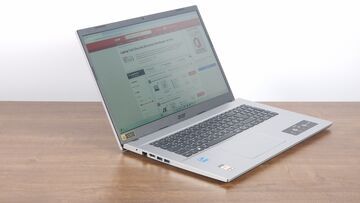

Weitgehend alltagstaugliche Ausstattung
Displayhelligkeit nur ausreichend
Display farbarm
Kein USB Typ-C vorhanden
Webcam und Touchpad könnten besser sein
HD-Webcam
Solide Videowiedergabeleistung
Anständige Leistung der professionellen Anwendung
Batterielaufzeit für einen ganzen Tag
Grundanzeige in 1080p
Kleiner Speicherstick mit 128 GB
Keine "Pro und Contra" in diesem Tester gefunden.
Acer Aspire 3 Verbraucherbewertungen
Die Bewertungen von Websites und Internetmagazinen können voreingenommen sein, zumindest bei Kundenrezensionen und Benutzern, die Acer Aspire 3 auf Amazon oder Fnac gekauft haben, sind wir sicher, dass wir echte Bewertungen zu diesem Produkt haben.
Tests anderer Notebooks Acer
Test Acer Swift X 14 AI, Test Acer TravelMate P6 14 AI, Test Acer Chromebook Plus 516,tests marke Acer
